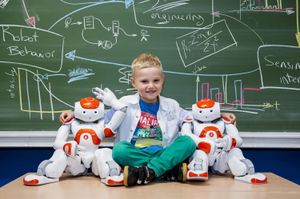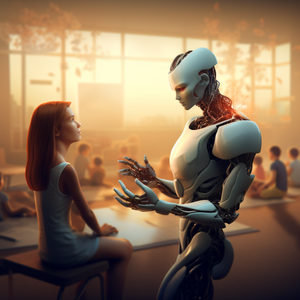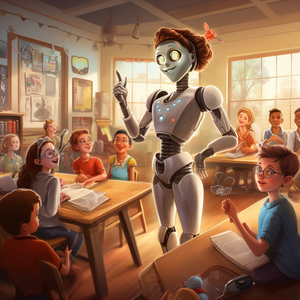In a world where technology continues to evolve at breakneck speed, the landscape of education has been dramatically transformed. Gone are the days of chalkboards and overhead projectors.
Instead, we find ourselves in an era where robots are stepping into the spotlight of the modern classroom. As the famous line from "The Imitation Game" goes,
Sometimes it is the people no one imagines anything of, who do the things that no one can imagine.
And in this case, it's not just people but robots who are doing the unimaginable in education.
Classroom robots are revolutionizing the learning experience, captivating the minds of students, and propelling them towards a brighter, more technologically adept future. As we explore this brave new world of education, we'll dive into the countless ways robots significantly impact schools and beyond.
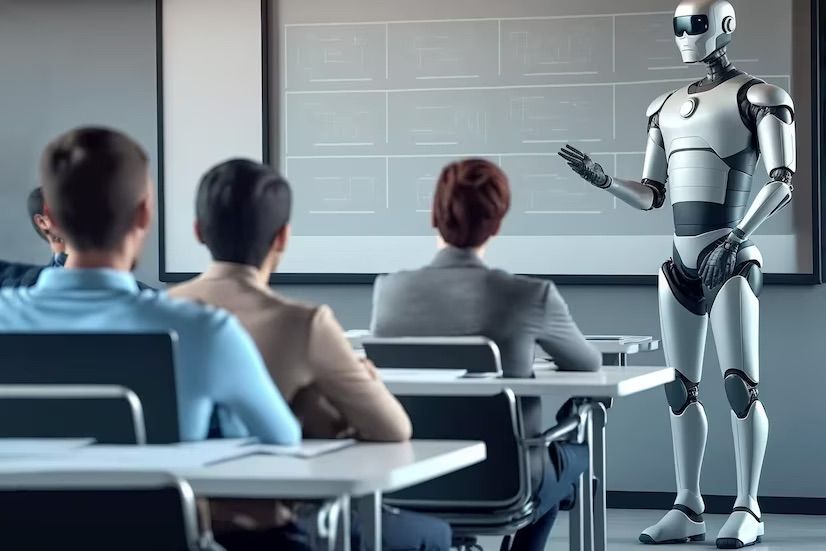
This might look like a scene from a sci-fi movie, but it's a view that is rapidly becoming a reality in classrooms around the globe. With their ability to engage students, offer personalized learning experiences, and even serve as classroom aides, robots are proving to be a valuable addition to the educational ecosystem.
A robot is a blend of actuators and AI. And if you think that we have to wait too long for that, think again. Khan Academy now has a GPT tutor!
Join us on this fascinating journey as we delve into the world of classroom robots, uncovering the many benefits and challenges of integrating these advanced machines into education, and discovering how they are reshaping the learning experience for students worldwide.
Enhancing learning experiences
As classroom robots become increasingly sophisticated, they offer unique opportunities to enhance the learning experiences across the classrooms. From personalized teaching methods to fostering collaboration and problem-solving skills, these advanced machines significantly impact how we approach education. Let's dive into some of the ways they are transforming learning experiences for the better.
Personalized learning and teaching methods
One of the greatest strengths of classroom bots is their ability to offer personalized learning experiences for students by adapting to individual learning styles, pacing, and skill levels and by providing tailored instruction and feedback that caters to the specific needs of each student.
This level of personalization is difficult to achieve in traditional classroom settings, where teachers may struggle to address the diverse needs of a large group of students. With the help of robots, students can progress at their own pace and receive the support they need to excel and get many more Gold stars!
Do Gold Stars Work?
There are numerous studies on the use of rewards, such as gold stars, in educational settings, which focus on the impact of these rewards on student motivation and learning outcomes. Here are two notable studies:
Cameron, J., & Pierce, W. D. (1994). Reinforcement, Reward, and Intrinsic Motivation: A Meta-Analysis. Review of Educational Research, 64(3), 363-423.
This meta-analysis examined the effects of tangible rewards, including gold stars and other forms of external reinforcement, on intrinsic motivation in educational settings. The study found that tangible rewards can undermine intrinsic motivation when they are expected or contingent on performance. However, when the rewards are given unexpectedly or are based on engagement rather than performance, they may not have a negative impact on motivation.
Kohn, A. (1993). Punished by Rewards: The Trouble with Gold Stars, Incentive Plans, A's, Praise, and Other Bribes. Boston: Houghton Mifflin Company.
In his book, Alfie Kohn argues that the use of rewards, such as gold stars, grades, or praise, can be counterproductive in promoting learning and motivation. Kohn suggests that these rewards can undermine students' interest in learning and lead to a focus on extrinsic factors rather than developing intrinsic motivation. The book reviews numerous studies and research findings to support its arguments against the use of rewards in education.
These studies offer insights into the use of gold stars and other rewards in educational settings, suggesting that their impact on motivation and learning can be complex and depends on how they are implemented.
Encouraging collaboration and problem-solving skills
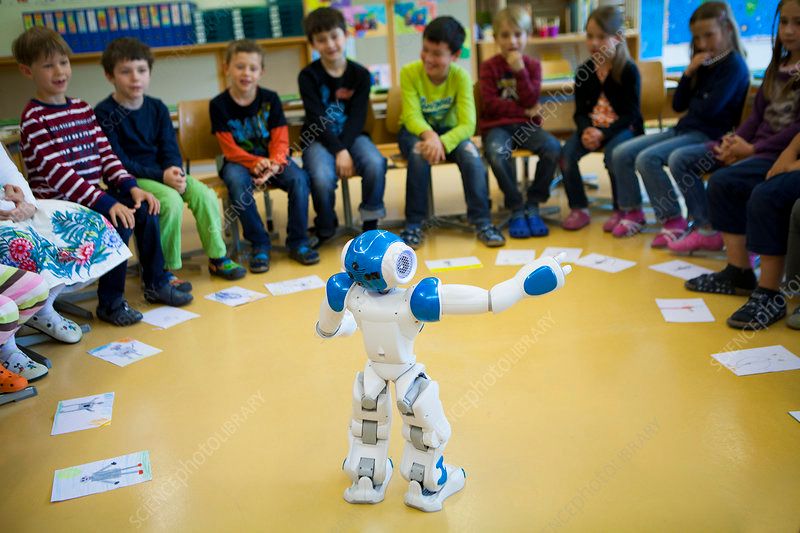
Robots are not just changing how students learn but also how they interact with one another. By promoting collaboration and teamwork, classroom robots encourage students to work together on projects, share ideas, and develop essential problem-solving skills.
Through group activities and challenges, students learn to communicate effectively, think critically, and apply their knowledge in innovative ways. This collaborative approach to learning helps students build valuable skills that extend beyond the classroom and into the real world.
Boosting student engagement and motivation
By injecting a sense of fun and excitement into the learning process, they help to create a more engaging and enjoyable educational environment. As students interact with these advanced machines, they're not only learning new concepts but also developing a genuine passion for discovery and innovation.
Moreover, they can provide immediate feedback and reinforcement, which can be a powerful motivator for students, by offering tangible rewards and encouragement, building up students' confidence in their abilities, and maintaining a positive attitude towards learning.

-
In this paper, Amanda Sharkey and Noel Sharkey discuss the ethical implications of using robots as caregivers for children, particularly in the context of robot nannies. The authors argue that relying on robots for childcare could lead to negative emotional consequences for children, such as reduced attachment to their parents or caregivers, and the potential for the development of skewed human-robot relationships. The study explores the potential risks and ethical concerns associated with the use of robots in childcare settings, while also acknowledging the potential benefits that these technologies may offer.
While there is a growing body of research on the interaction between robots and children, more studies are needed to better understand the potential negative emotional effects of using robots in various contexts. It is important to consider these potential risks and ethical concerns when designing and deploying robots for use with children.
Preparing students for a tech-savvy future
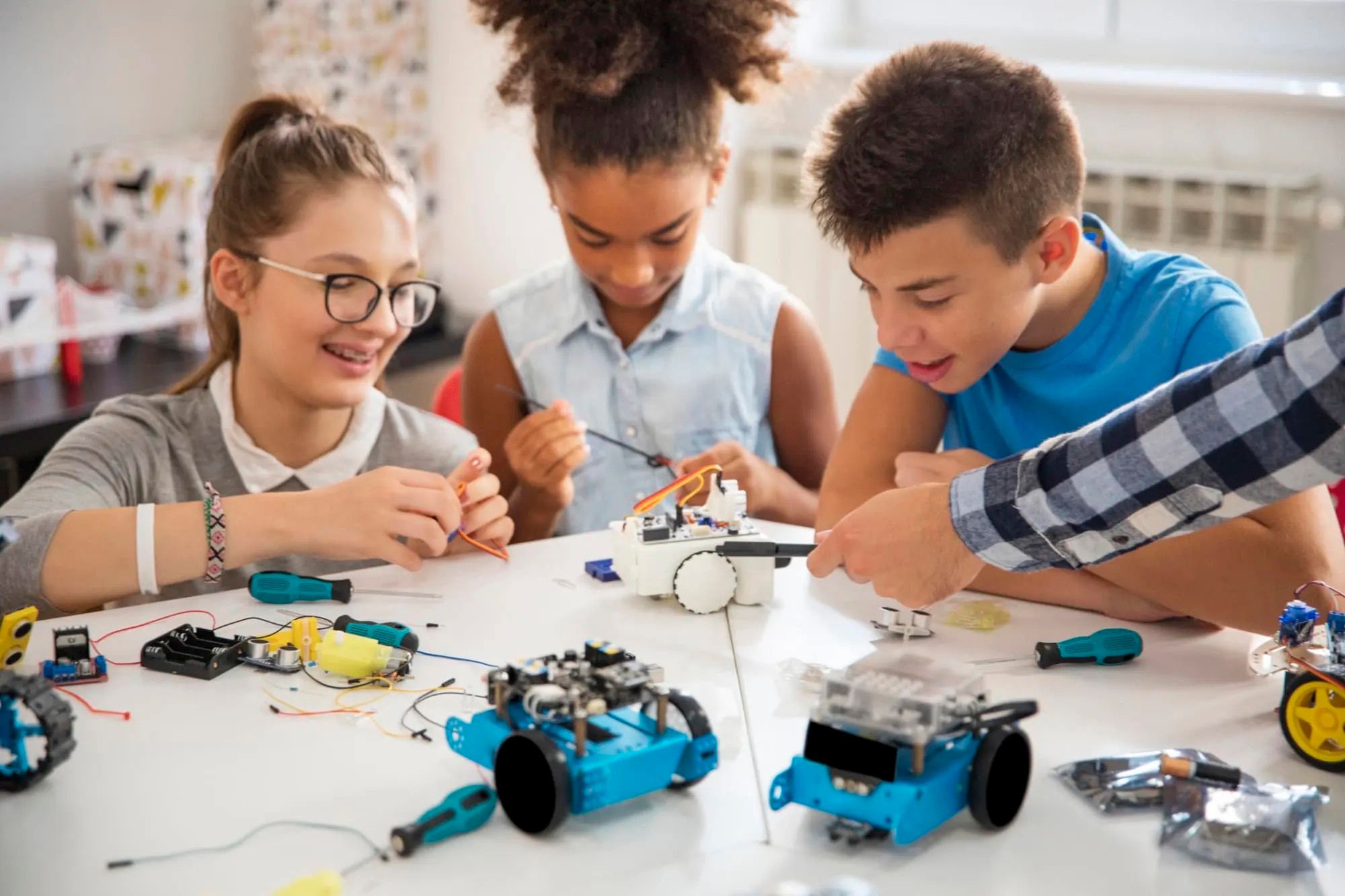
In today's rapidly evolving technological landscape, it's more important than ever for students to develop the skills and knowledge necessary to thrive in a tech-savvy future. Classroom robots play a crucial role in fostering these abilities, introducing programming and coding concepts at an early age, and inspiring students to pursue careers in STEM fields. Let's explore how robots are helping to prepare the next generation for the exciting opportunities that lie ahead.
Developing programming and coding skills at an early age
By incorporating programming and coding lessons into their curriculum, it provides students with the opportunity to develop essential tech skills from a young age. Through hands-on activities and interactive challenges, students learn the fundamentals of programming languages, algorithms, and problem-solving techniques. This early exposure to coding not only helps students build a strong foundation for future learning but also empowers them to think critically and creatively about technology.
As students progress through their education, the programming skills they develop can be applied to a wide range of subjects and disciplines. From computer science and engineering to digital arts and data analysis, coding skills are becoming increasingly valuable across a variety of fields.
Beyond teaching coding skills, classroom robots also serve as a powerful inspiration for students to pursue careers in STEM fields. By bringing cutting-edge technology into the classroom, robots help to spark curiosity and ignite a passion for learning. As students interact with these advanced machines, they're not only discovering new concepts but also exploring potential career paths in science, technology, engineering, and math.
Overcoming challenges of implementing robots in the classroom
While robots can offer numerous benefits for students and educators, implementing them in the classroom can present some challenges. Two of the most common concerns are the cost and accessibility of robotic technology and ensuring proper teacher training and support.
One of the primary concerns when it comes to implementing robots in the classroom is the cost associated with purchasing and maintaining this technology. While some robotic kits can be expensive, there are various options available to suit different budgets, such as the ones I mentioned previously.
Ensuring teacher training and support
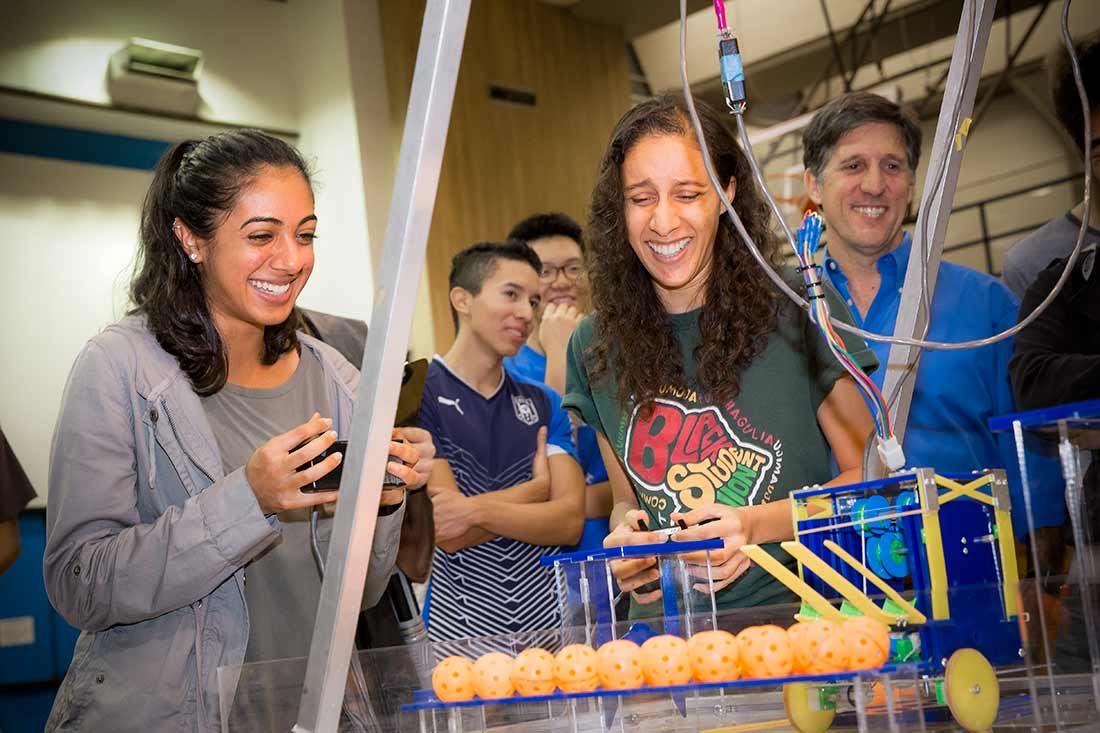
Teacher training and support are crucial for the successful implementation of robots in the classroom. Educators need to be comfortable with the technology and understand how to integrate it into their lesson plans effectively. Investing in professional development programs, workshops, and online courses to help teachers gain the necessary skills and knowledge for teaching with robots, but that all depends on multiple conditions: School funding, teacher supply, and the list goes on, and that might be another article that we should go deeper into the rabbit hole for.
Embracing the benefits of classroom automation for a brighter future
As we wrap up our adventure into the world of classroom robots, let's take a moment to peer into the crystal ball and explore the tantalizing potential of fully automated classrooms.
Picture it: A futuristic learning space buzzing with advanced technologies, all seamlessly working together to create a truly immersive, personalized, and interactive educational experience.
In this brave new world, AI-powered teachers would work hand-in-hand with their human counterparts, using their vast knowledge and advanced algorithms to tailor lessons to each student's unique learning style and pace. These virtual educators might take the form of holographic projections or perhaps even humanoid robots roaming the classroom, engaging with students, and offering one-on-one support when needed.
Think of the possibilities: Collaborative learning environments where students interact with each other and their AI teachers through virtual or augmented reality platforms, embarking on breathtaking educational journeys that defy the limits of space and time. As Morpheus from The Matrix might say, "Welcome to the real world."
As we stand on the cusp of this remarkable future, it's essential to remember that while technology has the power to transform education, it's our collective responsibility to ensure it's used wisely, ethically, and equitably. Only then can we truly unlock the full potential of fully automated classrooms and create a brighter future for all.
So let's take a page from the book of the ever-inspiring Doc Brown from Back to the Future: "The future is whatever you make it, so make it a good one." By welcoming classroom robots into our educational spaces, we're giving our students a chance to make their own futures brighter, bolder, and bursting with possibility.
So, buckle up, dears! The future of education is here, and it's brimming with robots ready to help us navigate the great unknown. Just like I keep saying that Robots will be an integral part of our lives, this includes the classroom too! Are you ready to join the adventure?
Hands-on learning: DIY robotics projects
Incorporating DIY robotics projects into the classroom is an excellent way to engage students and encourage hands-on learning. By allowing them to build and program their own machines, they can develop a deeper understanding of robotics concepts. All the while also fostering creativity and problem-solving skills. It’s a win-win situation.
Let’s explore some simple DIY robotics projects for different age groups, useful online resources, tutorials, and videos to help you get started...
Different age groups
There are countless DIY robotics projects available, too many to put them all here. So we will just go through a small sample that is available and suitable for various age groups, but let’s begin with the smaller human versions.
Younger students: A simple Bristlebot project requires minimal components and can be a fun, engaging introduction to robotics for younger students. These BOTS are tiny robots made from toothbrush heads and small vibrating motors, and they can be easily customized with different designs and decorations. Sorry in advance if your toothbrush gets commandeered in the name of science.
Middle school students: A Line-Following Robot offers a more advanced project for middle school students. By using light sensors and simple programming, students can create a robot that follows a predetermined path, such as a line drawn on the floor.
High school students: For high school students, a DIY Robotic Arm can provide a challenging and rewarding project. This type of project allows students to explore concepts such as servos, hydraulics, and programming while building a functional robotic arm.
Want more DIY Projects?
Just as I stated before, there are too many projects to list here, but there are many online resources available to help you with DIY robotics projects.
Websites such as Instructables, Make:, and Hackaday feature numerous project tutorials, video demonstrations, and step-by-step instructions for a wide variety of robotic creations.
Additionally, websites like Code.org and Scratch provide programming resources and tutorials specifically designed for students.
Choose your poison err… choose your bytes; sorry, just a little geek humor.

